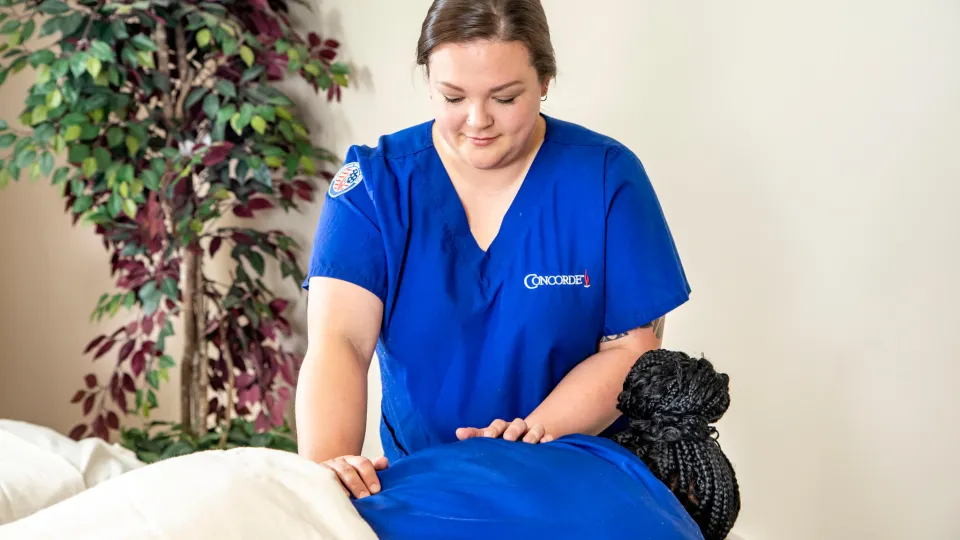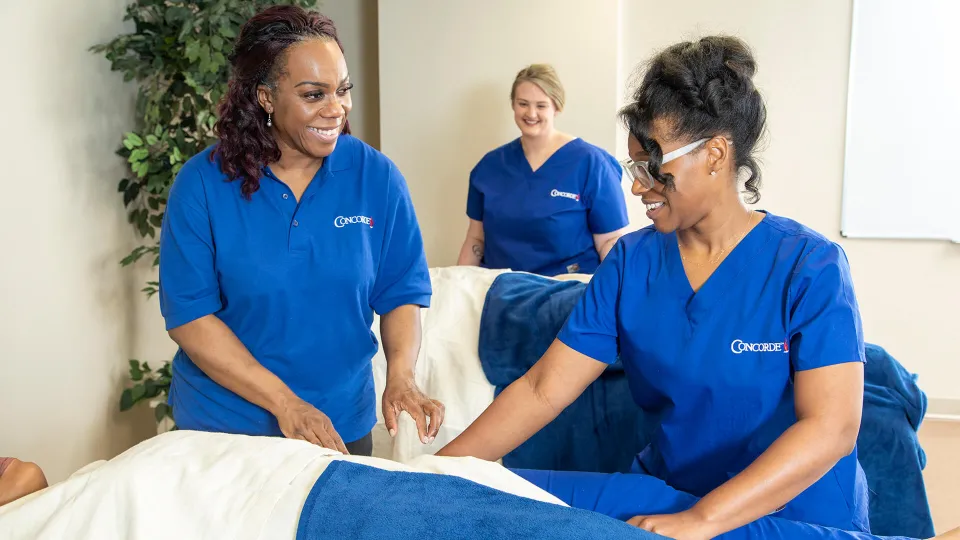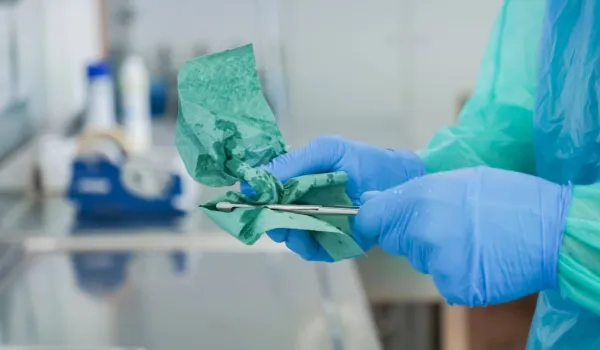
Massage therapy dates back several thousand years and was used as a form of medicine in many ancient cultures, including in China, Egypt, and Japan. During the Renaissance, massage became a popular commodity, and it wasn't until recently that massage became a viable form of therapy.
Today, massage therapy is used to treat a range of ailments, from physical injuries to fatigue or tension from stress. With ongoing research and the diverse applications of massage therapy, professionals and patients alike have found this to be a highly beneficial and rewarding field of health care.
What Is Massage Therapy?
Massage is the broad term for rubbing and manipulating skin, muscles, and the body's other soft tissues. Massage therapy is the application of massage in a therapeutic setting with the goal of improving and conditioning the body tissues to promote health and well-being.
A massage therapist is a certified professional who applies techniques that are tailored to each of their unique clients. For instance, the type of massage a therapist uses can range from gentle rubbing to deeper pressure, depending on the needs of the client. Massage therapy can also encompass a broad range of different types of massage, and each specific type has a variety of health benefits:
- Swedish massage: This is a gentle form of massage that uses kneading, deep, circular motions, long sweeping strokes toward the heart, vibration, and tapping. Swedish massage is ideal for people who are sensitive to touch, and it can help alleviate muscle tension and knots.
- Deep tissue massage: Deep massage uses slower strokes and deep pressure to reach the deeper layers of connective tissues and muscles. This type of massage is ideal for helping people who have muscle damage from injuries.
- Aromatherapy massage: Aromatherapy massage combines the therapeutic benefits of massage with the emotional benefits of aromatherapy to promote emotional healing. This type of massage boosts mood and reduces stress, and it can also lessen the symptoms of depression and alleviate muscle tension and pain.
- Hot stone massage: A hot stone massage combines the motions of a Swedish massage with heated stones to help relieve muscle tension and pain and to promote healthy blood flow.
- Shiatsu massage: This Japanese massage technique uses soft, gentle, and rhythmic pressure over the entire body, but a massage therapist may only target certain areas that need extra attention. It promotes physical and emotional relaxation, helps relieve stress, and can alleviate muscle soreness and tension.
- Reflexology: Reflexology, also known as zone therapy, helps promote relaxation and restoration to the body's natural energy levels through gentle to firm pressure on specific points on the ears, hands, and feet.
- Trigger point massage: Trigger point massage focuses on the areas in the body where muscle fibers can tighten and form knots, typically due to an injury or overuse. Therapists may use broad, gentle massage or deeper pressure on these trigger points to loosen the knots and reduce pain.
- Sports massage: Sports massage is used to focus on healing repetitive muscle injuries, such as those from playing sports. This massage technique is also used to help prevent future muscle injuries.
- Thai massage: Thai massage is an ancient healing practice that promotes flexibility and circulation. It relaxes the whole body using yoga-like stretching and firm pressure to manipulate and ease sore muscles.
- Prenatal massage: Expectant mothers can also benefit from massage with this technique. It's similar to Swedish massage with gentle motions that help alleviate pain in your hips and back, reduce stress, and promote relaxation.
- Massage chair: Therapists may also use massage chairs for quick sessions that focus on the shoulders, neck, and back. It's a great method for introducing clients to massage, and it can help reduce tension and promote relaxation.
- Myotherapy: Myotherapy assesses and treats soft tissue pains, injuries, and problems that can affect a person's mobility. This massage technique promotes the overall health and well-being of soft tissues in the body by applying pressure on trigger points.
- Lymphatic drainage massage: This is a gentle massage approach, similar to Swedish massage, that promotes relaxation and can help the immune system.
What Is Massage Therapy Used to Treat?
Massage therapy is used for a variety of reasons and to treat a range of conditions (1). Commonly, massage therapy focuses on relieving and managing issues like lower back pain, muscle tension, muscle knots, injuries to muscles and tissues, and stress. There are many more applications for massage, however, including in the treatment of depression and anxiety, physical health conditions, chronic disease, terminal illnesses, and more. Some specific conditions that therapists may use massage to treat include:
- Fibromyalgia.
- Myofascial pain.
- Headaches and migraines.
- Stress-induced insomnia.
- Multiple sclerosis.
- Rheumatoid arthritis.
- Scoliosis.
Massage therapists may evaluate clients with these conditions to develop a safe treatment plan that promotes healing and aids clients in overall mobility and pain improvement.
Health Benefits of Massage Therapy
Massage therapy can have a range of benefits, no matter the condition or issues it's used to treat. In fact, the Mayo Clinic describes massage therapy (2) as an effective treatment for reducing muscle tension, pain, and stress. Several more immediate benefits massage therapy can have include:
- Reducing tension.
- Improving circulation.
- Stimulating lymphatic drainage.
- Improving skin and tissue tone.
- Promoting the healing of soft tissue injuries.
In addition to alleviating and managing pain, massage therapy has many more benefits, especially when used to treat specific conditions.
One of the most common applications of massage therapy is in the treatment and management of stress and its symptoms. Massage can be effective for promoting both physical and emotional relaxation due to the release of dopamine in the brain. Dopamine is vital when it comes to maintaining balance in the central nervous system. The pressure and motions of massage help release dopamine, creating a feel-good sensation. This pleasurable and relaxed feeling can help the body better manage the physical aspects of stress and stay more balanced.
Massage therapy is also highly beneficial for chronic pain and discomfort due to diseases and disorders such as fibromyalgia, rheumatoid arthritis, scoliosis, or multiple sclerosis. While massage therapy can't cure these ailments, it can serve as an effective way to alleviate and reduce the worst of the symptoms. In the case of multiple sclerosis (MS), for instance, massage therapy can help improve spasticity, pain, poor blood circulation, and fatigue.
With arthritis pain, massage therapy can be effective for reducing swelling in the joints, relieving pain, improving joint mobility, and enhancing an individual's overall quality of life. Massage is also beneficial for treating pain symptoms of scoliosis. Most therapists use cranial sacral therapy and deep massage for patients with this condition.
What Does a Massage Therapist Do?
Massage therapists work with a diverse range of clients from many different backgrounds. Because massage therapy can be used in the treatment of a large variety of conditions and disorders, professionals in this field often choose to focus on one or more specializations. Many therapists find helping their clients achieve better overall health and well-being to be a very rewarding career, and if you're interested in pursuing this path, there are several things that you may want to learn.
Typically, massage therapists work in spas and health and fitness centers, but many professionals are now entering work in physical therapy settings, rehabilitation centers, hospitals, and other related environments. Some even work as in-home therapists. When treating clients who have chronic pain or disease, massage therapists will evaluate the client in order to outline a thorough plan for regular treatment. This also helps the therapist gain insight into the client's level of pain, stress, fatigue, or other symptoms in order to develop a range of techniques that will be safe and effective to use for that individual.
As massage therapists work with their clients, they typically perform sessions that last anywhere from 30 to 90 minutes in length, depending on the type of massage, the techniques, and the specific client's therapy plan. For instance, if a client is using massage as a means to manage stress, they may only need one 60-minute session per week or every other week. For clients with chronic pain due to arthritis or MS, on the other hand, a massage therapist may suggest more frequent therapy sessions, perhaps once or twice per week.
Going to School for Massage Therapy
There are many good schools for massage therapy, but if you are interested in pursuing a career specializing in massage for pain relief and chronic disorders, sports massage, or another modality, you'll need to attend a school like Concorde that is accredited and can provide you with the training you'll need to take and pass your certification tests. If you choose to pursue a massage therapy path that concentrates on the healing, therapeutic, and physical health qualities of massage therapy, consider a program that has a focus on the scientific aspects of massage.
No matter what program you choose, the study of anatomy and physiology will be an important part of your education. In an educational program for massage therapy, such as the massage therapy diploma program at Concorde, you will generally focus on massage techniques that are designed to enhance and support patients' physical health. Many programs also cover business ethics, professional operations, and legislation related to practicing massage therapy.
In addition to classroom studies, a massage therapy program will provide you with opportunities for hands-on training and practice with the skills and knowledge you'll need for the job. Massage therapists in training may work with actual clients through clinics or internships or through their educational program with fellow students.
Massage Therapy Certification
Before you can start working and take on clients as a massage therapist, you'll need to become licensed or certified in massage therapy. Most states require you to take the Massage and Bodywork Licensing Examination (MBLEx), which is administered and overseen by the Federation of State Massage Therapy Boards (FSMTB). The massage therapy diploma program offered through Concorde will help prepare you to take this exam.
In addition, anyone can apply to take the test, whether they are still finishing their massage therapy education or they have received their diploma already. There are no specific requirements to take the exam, but you must pay a fee, submit an application, and ensure that your school sends in your education records.
The MBLEx is a 100-question test that covers key massage therapy concepts in seven different categories:
- Anatomy and physiology.
- Kinesiology.
- Pathology and contraindications.
- Physiological effects and benefits of soft tissue techniques.
- Client assessment, evaluation, and treatment planning.
- Business ethics, laws and regulations, and boundaries.
- Professional practice guidelines.
There are also specialty licenses for massage therapists working in complementary alternative medicine and acupuncture. Since there are so many specializations to consider when it comes to massage therapy, many therapists choose to specialize in several different fields of massage rather than just one. This enables massage professionals to work with a broader scope of clients and with a more extensive range of techniques. Additionally, with a professional license, many massage therapists choose to go into business for themselves, opening a massage clinic or mobile massage therapy service to better serve their clients.
Massage therapy continues to be a beneficial method of reducing stress and boosting mood, along with an entire list of additional health benefits. If you're interested in helping people in this way consider a career as a massage therapist. You can earn a diploma in massage therapy through Concorde's massage therapy program in as few as 11 months. With so many options to choose from in the field, it's sure to be a rewarding career.
Footnotes
(1) "Massage Therapy: What You Need to Know," National Center for Complementary and Integrative Health, https://www.nccih.nih.gov/health/massage-therapy-what-you-need-to-know
(2) "Massage: Get in Touch With Its Many Benefits," Mayo Clinic, https://www.mayoclinic.org/healthy-lifestyle/stress-management/in-depth/massage/art-20045743
(3) "Image," james ford London, https://www.flickr.com/photos/171279624@N04/47710764612/sizes/m/
Take The Next Step Towards a Brighter Future
Interested in learning more about our Massage Therapy program?
We have a Concorde representative ready to talk about what matters most to you. Get answers about start dates, curriculum, financial aid, scholarships and more!







